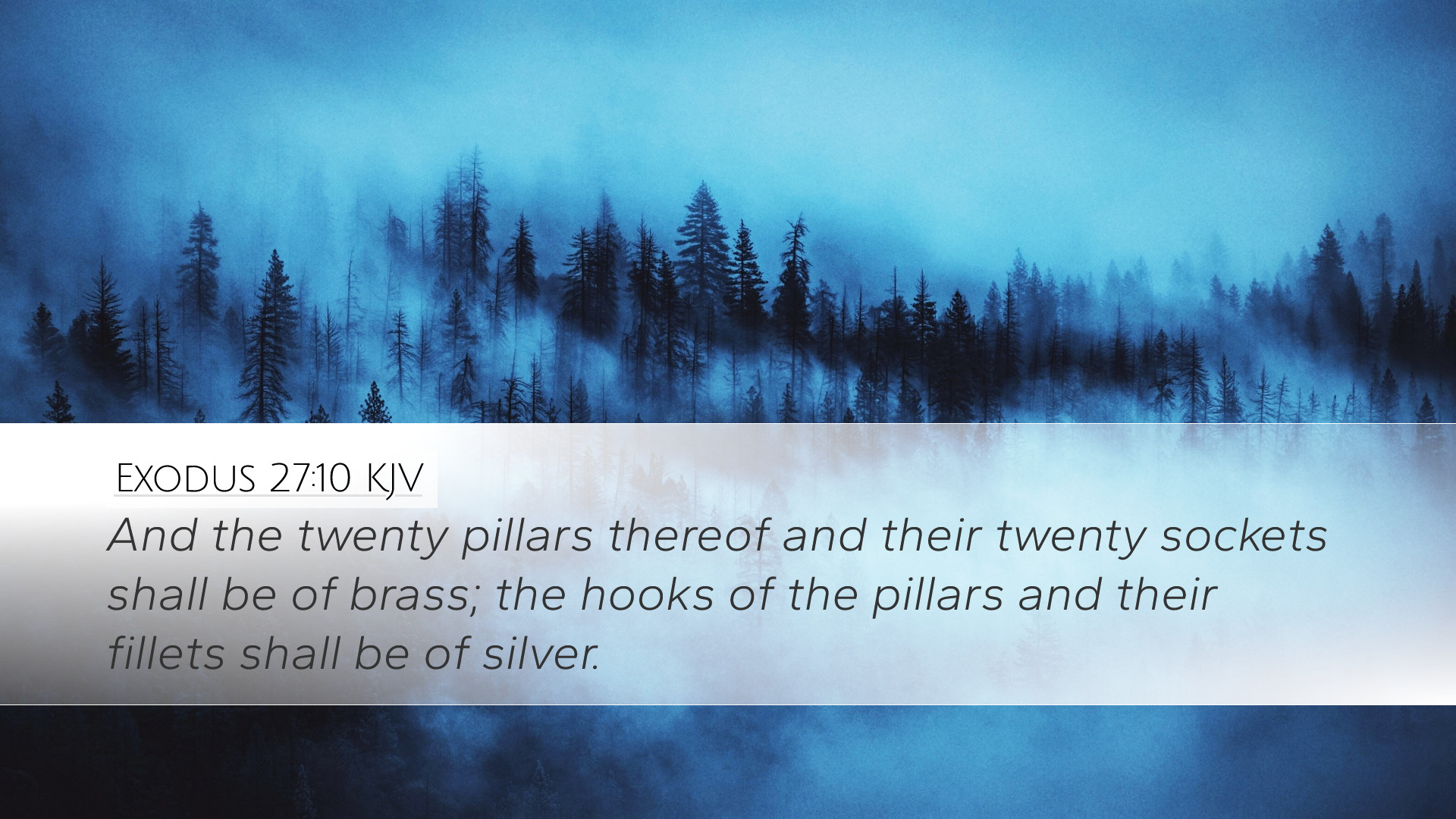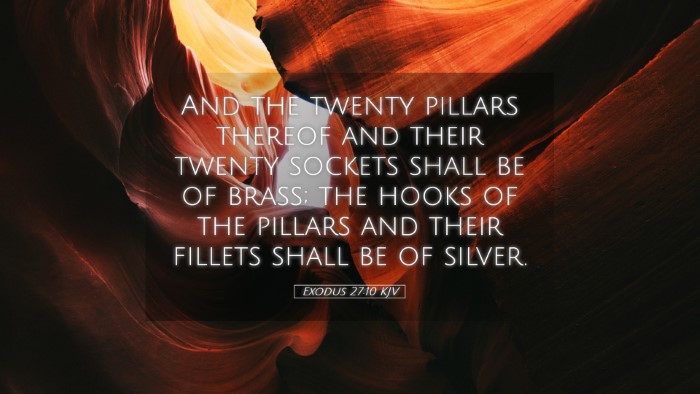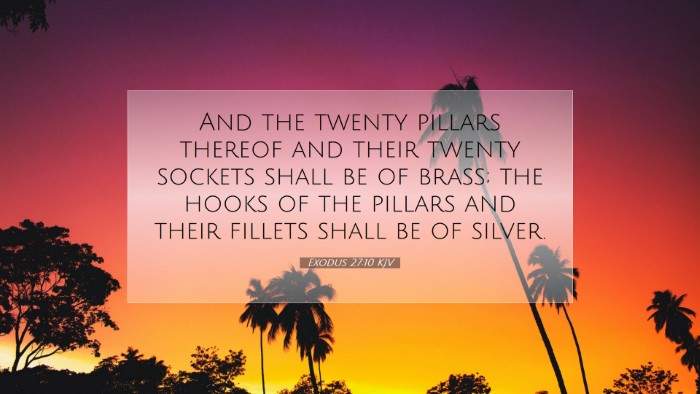Exodus 27:10 - Bible Commentary Summary
Exodus 27:10 states:
"And the twenty pillars thereof, and their twenty sockets shall be of brass; the hooks of the pillars and their fillets shall be of silver."
This verse is part of God's instructions to Moses concerning the construction of the Tabernacle and its courtyard. The elaboration of these details holds significant theological implications and reflects the divine order in worship.
Contextual Overview
Understanding Exodus 27:10 requires recognition of the broader context of the Tabernacle system established in Exodus. The Tabernacle served as the dwelling place of God among His people, and its construction was to be executed according to specific divine specifications.
Insights from Public Domain Commentaries
Matthew Henry's Commentary
Matthew Henry emphasizes the importance of the Tabernacle's structural integrity and aesthetic beauty. Each part of the Tabernacle was intended not only for functionality but also for symbolism in worship. Henry notes that:
- Twenty Pillars: The number twenty signifies completeness in organization and support for the structure, which points to God's sovereign design.
- Brass Sockets: The brass symbolizes judgment, underscoring the refined nature of God’s justice, supporting the pillars that ultimately uplift the worship experience.
- Silver Hooks: Silver, representing redemption and atonement, indicates that access to God is possible only through sacrificial means.
Therefore, every construction detail imparts a lesson about God's holiness, the need for atonement, and the organization of divine worship.
Albert Barnes' Notes on the Bible
Albert Barnes traces the symbolic significance further, identifying the physical components as emblematic of the spiritual realities they represent:
- Design of the Pillars: The strength and number of the pillars showcase God's protection and the community's unity, indicating that God sustains His people.
- Brass Structure: Brass, often used for items associated with sacrificial rituals, highlights the seriousness of sin and the necessity of a sacrificial system.
- Fillets of Silver: The fillets not only bind the pillars but also reflect the binding covenant relationship between God and Israel, suggesting their responsibilities in honoring that relationship.
This section of the Tabernacle illustrates how God's presence is fundamentally tied to the governance of holiness and redemption, framing the life of the Israelites around worship.
Adam Clarke's Commentary
Adam Clarke provides additional insight into the components used in the construction:
- Pillars of the Court: Clarke notes that the arrangement and the material of the twenty pillars emphasized sturdiness and divine favor, creating an imposing structure that was to draw worshippers' attention toward heaven.
- Sockets of Brass: The harshness of brass contrasts with the beauty of silver, providing a duality that represents the seriousness of sin that requires judgment, while silver conveys the grace and forgiveness that comes through the sacrifices.
- Hook and Fillets: The use of silver hooks denotes the linking of God's protection to His grace, tying the past deliverance of Israel to the responsibilities of their covenant.
Clarke elucidates how each element of the Tabernacle was intended to instruct the Israelites about God’s nature and their relationship with Him, interpreting each material not just as a construction choice, but as a theological statement.
Theological Implications
The details provided in Exodus 27:10 show that every aspect of worship is imbued with meaning. The structural elements go beyond mere physicality; they echo profound spiritual truths:
- God’s Holiness: The materials signify how interactions with God must account for His holiness.
- Redemption and Sacrifice: The reliance on materials like brass and silver is a continuous reminder of the sacrificial system instituted for atonement.
- Community and Order: The arrangement of the pillars portrays the unity necessary in the community of believers, emphasizing that collective worship must be supported by understanding and adhering to God’s design.
Application for Today
For pastors and church leaders, Exodus 27:10 serves as a reminder that the form of worship must honor God's design. The details of worship spaces—whether in architecture or in the liturgy—should reflect God’s character and His expectations for His people.
Students and scholars can meditate on the completion and integrity of God’s instructions, recognizing the relevance of such patterns in contemporary worship, both in practical and theological senses. It invites deeper exploration into how design and structure shape communal and individual faith practices.
Overall, this verse encapsulates the relationship between God's prescribed order of worship and the ensuing community dynamics, encouraging deeper reflection on how worship structures influence the experience of divine encounters.


